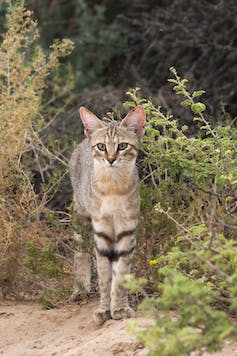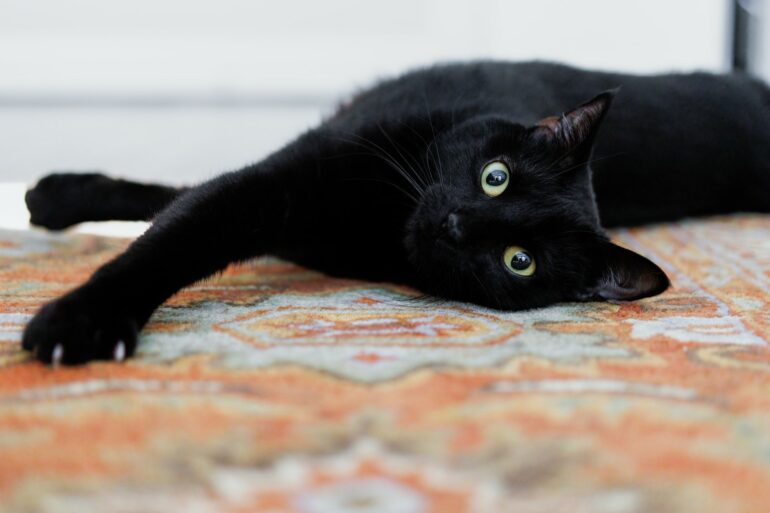A few years ago, I had the opportunity to go on safari in southern Africa. One of the greatest thrills was going out at night looking for predators on the prowl: lions, leopards, hyenas.
As we drove through the darkness, though, our spotlight occasionally lit up a smaller hunter – a slender, tawny feline, faintly spotted or striped. The glare would catch the small cat for a moment before it darted back into the shadows.

An African wildcat doesn’t look so different from a domestic cat.
pum_eva/iStock via Getty Images Plus
Based on its size and appearance, I initially presumed it was someone’s pet inexplicably out in the bush. But further scrutiny revealed distinctive features: legs slightly longer than those of most domestic cats, and a striking black-tipped tail. Still, if you saw one from your kitchen window, your first thought would be “Look at that beautiful cat in the backyard,” not “How’d that African wildcat get to New Jersey?”
As an evolutionary biologist, I’ve spent my career studying how species adapt to their environment. My research has been reptile-focused, investigating the workings of natural selection on lizards.
Yet, I’ve always loved and been fascinated by felines, ever since we adopted a shelter cat when I was 5 years old. And the more I’ve thought about those African wildcats, the more I’ve marveled at their evolutionary success. The species’ claim to fame is simple: The African wildcat is the ancestor of our beloved household pets. And despite changing very little, their descendants have become among the world’s two most popular companion animals. (Numbers are fuzzy, but the global population of cats and dogs approaches a billion for each.)
Clearly, the few evolutionary changes the domestic cat has made have been the right ones to wangle their way into people’s hearts and homes. How did they do it? I explored this question in my book “The Cat’s Meow: How Cats Evolved from the Savanna to Your Sofa.”
Why the African wildcat?
Big cats – like lions, tigers and pumas – are the attention-grabbing celebrities of the feline world. But of the 41 species of wild felines, the vast majority are about the size of a housecat. Few people have heard of the black-footed cat or the Borneo bay cat, much less the kodkod, oncilla or marbled cat. Clearly, the little-cat side of the feline family needs a better PR agent.
In theory, any of these species could have been the progenitor of the domestic cat, but recent DNA studies demonstrate unequivocally that today’s housecats arose from the African wildcat – specifically, the North African subspecies, Felis silvestris lybica.
Given the profusion of little pusses, why was the North African wildcat the one to give rise to our household companions?
In short, it was the right species in the right place at the right time. Civilization began in the Fertile Crescent about 10,000 years ago, when people first…


